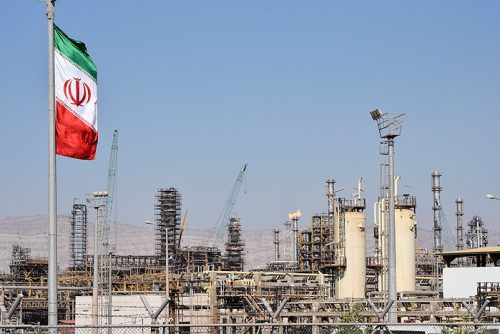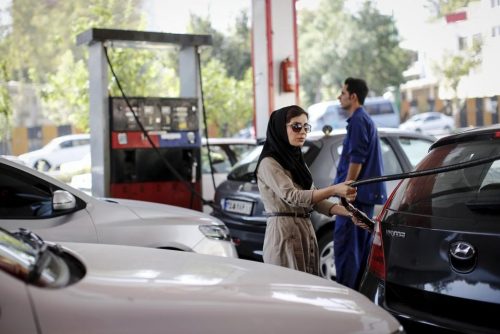Read in this article
- In recent years, the country’s domestic demand for diesel has grown rapidly
- Liquefied petroleum gas, fuel oil and gasoline accounted for about 74% of the total exports of petroleum products
- Over the past 5 years, Iran has exported gasoline and diesel, earning about $3 billion annually.
- The country’s crude oil production primarily meets the needs of the export markets
- Iran’s decision to supply fuel to Lebanon was based on their longstanding political and economic ties
- Iran is promoting alternative fuels such as compressed natural gas and electricity
- Iran is increasingly focusing on addressing environmental issues such as air pollution and climate change
When talking about the diesel shortage crisis in Iran, it should be noted first that the supply and correct use of energy is one of the most important issues affecting the level of economic progress and political and social stability of countries. In this regard, the protection of existing resources, consumption management and the use of new energy sources are of particular importance .
The transport sector currently follows the domestic, public and commercial sectors in energy consumption, and represents about a quarter of total energy consumption.
The increase in population and the increase in the number of cars can be considered one of the most important reasons for the increase in fuel consumption in recent years, and Iran has transformed from a country that exports gasoline and diesel to an importer.
Last week, the first imported diesel ship was unloaded at Chabahar port, with a capacity of 50 million liters of diesel.
Iran has historically been a net exporter of diesel fuel, with large quantities exported to countries in the region such as Iraq, Afghanistan and Pakistan. In recent years, the country’s domestic demand for diesel has grown rapidly, which has led to a decrease in the amount available for export.
Iran exported nearly 840,000 barrels per day of petroleum products in 2021, which is up from about 700,000 barrels per day in 2020, according to the US Energy Information Administration.
Liquefied petroleum gas, fuel oil and gasoline accounted for about 74% of total petroleum product exports, according to estimates by the British company Facts Global Energy.
It should be noted that Iran has exported, during the past 5 years, gasoline and diesel, and earned about $3 billion annually.
Causes of diesel shortage in Iran
Since 2016, diesel has been affected by the significant increase in gas production in Iran and the replacement of liquid fuel consumption by natural gas in power plants.
According to official statistics of the Ministry of Energy, in 2014-2015, Iran’s diesel production reached 97 million liters per day, while its consumption exceeded 104 million liters.
In the same year, Iran consumed more than 33 million liters of diesel in power plants. In total, during 2011, the consumption of liquid fuels in power plants amounted to 27 billion liters.
According to official reports, Iranian power plants, especially due to their consumption of liquid fuels, are responsible for 40% of the country’s carbon dioxide production, which means – according to the World Health Organization – that the annual cost of air pollution in Iran is estimated at $16 billion.
In recent years, especially after the coronavirus has receded, the consumption of gasoline and diesel has increased in Iran.
Last January, the CEO of the National Iranian Oil Products Distribution Company (NIOBDC), Ali Akbar Nejad Ali, said: “Gasoline consumption in winter has not decreased, and we are witnessing excessive consumption of this oil product.”
He added, “The average consumption of gasoline this year, from the beginning of the year until today, amounted to 103.5 million liters per day, and on the third day of January, 116 million liters of gasoline were consumed in the country.”

This amount is very large for the winter season this year, and it is the only year in which consumption did not decrease in winter, contrary to the trend of previous years.
On the other hand, diesel is used in various economic sectors, but the main consumer of this petroleum product is the transport sector, which represents about 60% of Iran’s diesel consumption.
In the diesel production sector, the production capacity of refineries in Iran has increased from 69.1 million liters per day, in 2001, to about 115 million liters per day in 2021.
In the past years, especially in the fall and winter, due to the shortage of natural gas in Iran, the Ministry of Energy delivered diesel and fuel oil to power plants.
In an interview in February 2021, the CEO of the National Oil Refining and Distribution Company, Jalil Salari, stated that since the beginning of that year, 9 billion liters of diesel, or 27.2 million liters per day, have been consumed in power plants.
In other words, about 27% of the diesel fuel burned in 2021 was used in power plants to make up for the gas shortage.
According to the CEO of the National Refining and Distribution Company, diesel consumption in 2019 amounted to about 8 billion liters, which is equivalent to 24.5 million liters per day.
This amount represents 24% of the country’s total diesel consumption, which was consumed in power plants.
Factors of Iran’s dependence on diesel imports
Iran’s domestic oil refining capacity is insufficient to meet domestic demand for refined petroleum products. Iran’s crude oil production primarily meets the needs of export markets, while domestic demand for petroleum products has increased rapidly, especially diesel fuel.

The lack of sufficient refining capacity meant that Iran had to import diesel from other countries to meet the growing demand.
In turn, the sanctions imposed by the United States impeded Iran’s ability to maintain refineries and develop energy infrastructure, which led to a decrease in the domestic production of refined petroleum products.
US sanctions aimed at restricting Iran’s access to the global financial system and limiting its ability to export crude oil dealt a major blow to the country’s economy.
The lack of resources and access to foreign investment meant that Iran was unable to refine crude oil domestically, which fueled the need for diesel imports.
Supplying Lebanon with more fuel
Iran is preparing to deliver a shipment of diesel to Lebanon via Syria, according to a report by TankerTrackers, which was published in January 2022. This report stated that the volume of these goods could amount to about 159 million liters of diesel.
In August 2021, Iran supplied fuel to Lebanon to help alleviate the severe fuel crisis in the country. Lebanon has been facing a fuel shortage for several months due to its economic crisis, which has led to a shortage of foreign currency and limited access to fuel imports.
Iran’s decision to supply the fuel to Lebanon was based on their long-standing political and economic ties. Iran was a key ally of Lebanon’s Hezbollah, a Shiite Islamist political party and militant group, and provided significant military and financial support to the group over the years.
It should be noted that the small Iranian refineries do not have a standard and unified production capacity.
Iran is promoting alternative fuels such as compressed natural gas and electricity, and if successful, these efforts could reduce the country’s demand for diesel and other fossil fuels, leading to lower diesel imports.

Changes in international sanctions play a major role. The status of international economic sanctions against Iran will be a major factor in determining the future of diesel imports.
When sanctions are lifted, Iran will have greater access to foreign investment and technology, which could help it increase its refining capacity and reduce its need to import diesel.
Finally, it is necessary to consider environmental concerns. Iran is increasingly focused on addressing environmental issues such as air pollution and climate change, and the government has implemented policies to promote clean energy and reduce emissions, which could lead to a decrease in diesel imports over time.
Iran could explore alternative supply chains for importing diesel, such as shipping it from distant countries or developing pipelines to connect it to new sources of supply. These options could be costly and could face geopolitical and regulatory challenges.
Iran’s dependence on diesel imports is a complex problem caused by various factors, such as insufficient domestic refining capacity, US sanctions, diesel subsidies, and dependence on diesel in the transport sector.
To address this problem, Iran needs to invest in its domestic refining capacity, find alternative energy sources, and reduce its dependence on diesel.
Moreover, the Iranian government should consider gradually reducing diesel subsidies to encourage more efficient use of energy and reduce the need for diesel imports.
The future of Iran’s diesel imports depends on multiple factors that are subject to change over time.
While the country may seek to reduce its dependence on diesel imports, it is unclear whether it will be able to achieve this soon, given its current economic and geopolitical situation.
* Dr. Umud Shoukry, senior advisor on foreign policy and energy geopolitics, is the author of U.S. Energy Diplomacy in the Caspian Basin: Changing Trends Since 2001“.
*This article represents the opinion of the author, and does not necessarily reflect the opinion of the energy platform.
Also read..

Leave a Reply